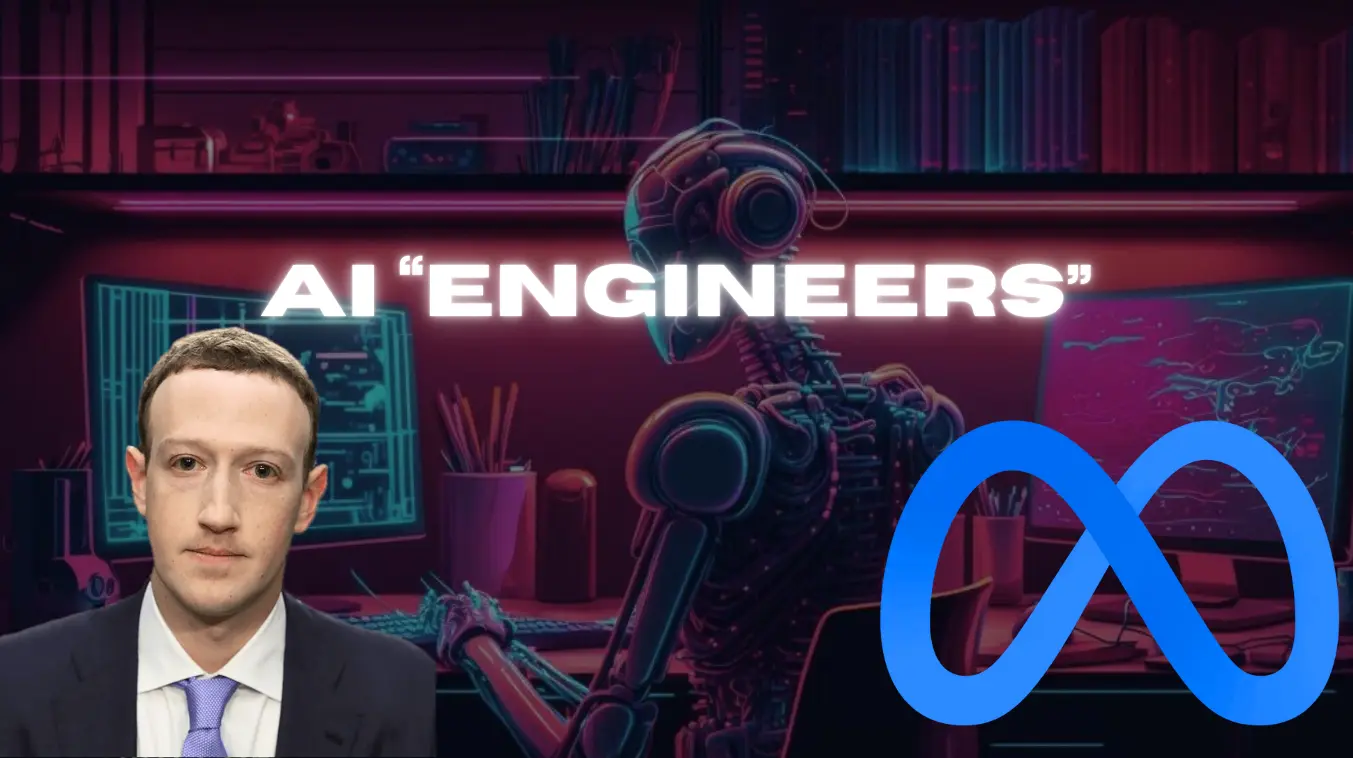
AI as a “Mid-Level Engineer”: Meta’s Vision
2 min read
Introduction
When Mark Zuckerberg took the stage at Stripe Sessions earlier this year, he offered a glimpse of a near future that many of us have been speculating about for years: artificial intelligence not merely assisting human developers, but stepping into their shoes. Zuckerberg boldly predicted that within months, AI systems could operate at the level of a mid-level software engineer—writing coherent code, debugging complex issues, and even grasping project requirements without constant human intervention. It was a statement that stopped the audience in its tracks and set off waves of excitement (and a little anxiety) throughout the tech community.
From Autocomplete to Autonomy
For the past decade, code completion tools have steadily improved. What began as rudimentary syntax suggestions in simple text editors has evolved into powerful, context-aware assistants embedded in our integrated development environments (IDEs). Yet until now, these tools have required a clear direction from human engineers: a few keystrokes or comments to get them started, followed by careful human oversight to ensure correctness.
Zuckerberg’s vision, however, goes several steps further. He envisions AI that doesn’t just autocomplete, but actually owns the bulk of a coding task from end to end—scoping requirements, writing the initial implementation, constructing unit tests, and even liaising with other AI agents to handle auxiliary tasks like infrastructure provisioning. In other words, leaner teams could delegate entire feature builds to AI, stepping in only to steer, review, and refine.
Enter “Vibe Coding”
Supporting this vision, Y Combinator partner Garry Tan introduced the concept of “vibe coding.” The idea behind vibe coding is deceptively simple: treat the AI like a teammate whose strengths lie in rapid prototyping and rote tasks, while preserving human oversight for higher-order thinking. Developers would describe the desired behavior—say, “build an API endpoint that returns user profiles filtered by registration date”—and the AI would generate boilerplate, validation logic, test cases, and documentation in one swift pass.
The “vibe” comes from the fluid back-and-forth: the AI proposes a first draft, the developer tweaks or extends it, the AI incorporates feedback, and so on—much like a pair-programming session, but with a tireless partner. In theory, this reduces friction from context switching and boilerplate drudgery, freeing engineers to focus on architecture, performance tuning, and creative problem-solving.
Implications for Team Structures
If widely adopted, this shift could upend conventional engineering hierarchies. Today, mid-level engineers are often the workhorses: translating product specs into code, triaging bugs, and mentoring junior team members. Senior engineers and architects handle the most critical design decisions, while junior engineers learn by tackling smaller tasks.
Under Meta’s model, AI steps into that mid-level role. Small startups, which traditionally scale by hiring mid-sized squads of engineers, could instead operate with skeleton crews of senior experts overseeing AI agents. Corporations might redistribute headcount towards strategic roles—product managers, UX designers, security specialists—with fewer humans writing routine code. On paper, project turnaround times could shrink dramatically, while payroll budgets and recruiter headaches ease.
Caveats and Concerns
Yet as enticing as this future seems, seasoned technologists urge caution. AI-generated code, while syntactically correct, can sometimes harbor inefficiencies or obscure edge-case bugs. Subtle performance regressions might slip through if test suites aren’t comprehensive. Worse still, critical security vulnerabilities—buffer overflows, injection flaws, or misconfigurations—could be introduced by an overly confident AI that hasn’t fully internalized best practices or organizational policies.
There’s also the risk of “automation complacency,” where developers begin to accept imperfect AI outputs simply because they’re convenient. To guard against this, teams will need robust code review pipelines, advanced static analysis tools, and continuous monitoring. In essence, the human role shifts from code-writer to code-auditor and AI-trainer—requiring deep expertise to ask the right questions and catch hidden flaws.
Preparing for the Transition
So, how can engineering organizations get ahead of this transformation? First, they should start experimenting with existing AI coding tools—integrating them into small-scale projects, assessing both productivity gains and quality deficits. Cross-functional workshops can help teams establish new workflows: defining responsibilities for AI authorship versus human review, setting standards for test coverage, and codifying security guidelines that AI systems must follow.
Training also plays a pivotal role. Just as junior engineers once learned by reading senior engineers’ code, today’s developers must learn to “read” AI—authored code: spotting common AI quirks, understanding its templated patterns, and knowing when to override default behaviors. Equally important is cultivating a culture that values both speed and safety—where rapid delivery doesn’t come at the expense of reliability.
Conclusion
Meta’s bold pronouncement—that AI could soon function as a mid-level engineer—signals a seismic shift in how software will be built. By delegating routine coding tasks to intelligent systems, teams can become leaner, more focused, and potentially more innovative. Yet this promise comes hand in hand with new responsibilities: ensuring AI outputs meet performance, security, and maintainability benchmarks, and retraining human engineers to oversee, audit, and enhance AI-generated work.
The coding profession stands at a crossroads. Those who embrace AI as a trusted collaborator—and invest in the necessary safeguards—may find themselves at the vanguard of a new era in software development. Others, content with the status quo, risk being outpaced by competitors who harness the full potential of AI as their tireless mid-level engineers. The choice is clear: adapt and thrive, or watch from the sidelines as the next generation of AI—powered engineering takes flight.
Key Words:
Agentic AIAi AgentsAi takeover meta vibe codingSoftware